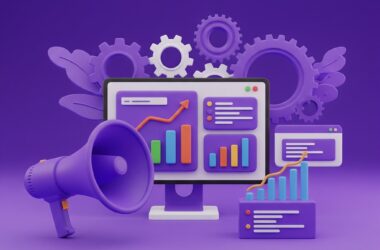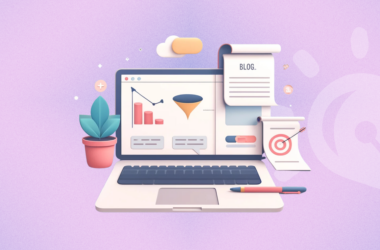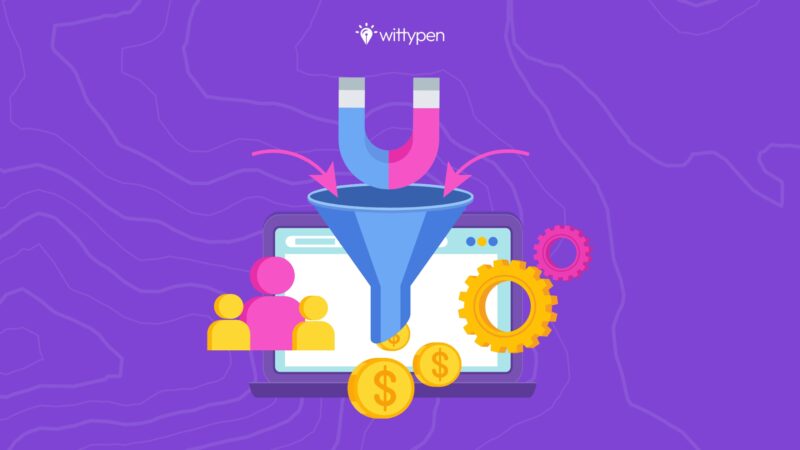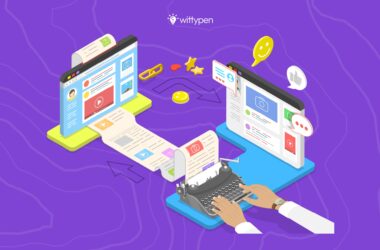Last updated on October 30th, 2023
Ask yourself a question. What is the main motive for practicing SEO strategies? The easy answer: getting people to buy your product. Whether you’ve noticed it or not, all content is created keeping the buyer’s journey in mind. And what’s the way to keep track of the buyer’s journey with your brand? By using a content marketing funnel.
The key to generating leads is creating content while keeping the content marketing funnel in mind. Don’t worry, this is way simpler than it sounds. The marketing funnel is simply a model created for marketers to track buyer journeys on websites. The funnel helps turn leads into loyal customers, and achieve remarkable sales.
In this article, you will learn what the content marketing funnel is, what its stages are, and how to create content for targeting users in each stage of the funnel to transform them into full-time buyers. So what are you waiting for? Read along!
What is a Content Marketing Funnel?
The Content Marketing Funnel is a model that helps marketers visualize how content creation influences the path a potential customer might take from the moment they find out about your brand, till the moment they decide to purchase your product. A Content Marketing Funnel typically has 3 stages.
The 3 Stages of an Effective Content Marketing Funnel
Take a good look at this image of a content marketing funnel and analyze its shape. As you can see, the funnel keeps getting narrower as you go down.
The design conveys the following message: the audience interacting with your brand is at its highest at the top and keeps reducing as you reach the bottom. The ones at the top are the farthest, and the ones at the bottom are the closest to buying your product.
What we’ll learn in this article is how through content creation, you can maximize the number of leads making it to the bottom of the funnel, and eventually increase your overall sales.
The Content Marketing Funnel typically contains three stages –
- Top of the Funnel (TOFU)
- Middle of the Funnel (MOFU)
- Bottom of the Funnel (BOFU)
Let’s have a closer look at each stage of the funnel, and synonymously, each stage of the buyer’s journey:
1. Top of the Funnel (TOFU):
The Top of the Funnel (TOFU) stage is also known as the awareness stage. It’s theoretically the beginning of the funnel and the beginning of your buyer’s journey with your brand.
The leads are at their highest in this stage, and they are most probably looking for answers to their various questions. Your job as a marketer would be to create content that educates your target audience about any query they have.
TOFU content doesn’t focus on promoting your product or brand directly, but it is still important to gently make the users aware of their benefits. Progress can be tracked by paying attention to site traffic, engagement in social media, and the number of subscriptions you’re getting.
Top of the Funnel content marketing is done by creating informative content in the form of blogs, social media posts, and ebooks among others.
2. Middle of the Funnel (MOFU):
The Middle of the Funnel (MOFU) stage is also known as the consideration stage. As you go down the funnel, it gets narrower, and so do the users paying attention to your brand.
The people who weren’t interested in purchasing your product have now removed themselves from consideration. Therefore, you need to focus on being considerate towards the ones who have stayed and are willing to learn more.
To get this done, you need to provide in-depth information regarding your brand and product. Be direct in conveying why your brand is a good choice to buy from. Progress can be tracked by analyzing conversion rates and tracking the leads.
Middle of the Funnel content marketing is mainly concerned with creating detailed content about providing solutions for your target audience’s pain points. The motive is to gain the trust of potential customers in your brand.
3. Bottom of the Funnel (BOFU):
The Bottom of the Funnel (BOFU) stage is also known as the decision stage. At this point, the number of people staying with your brand is at its lowest and they’re on the brink of making the decision of being a customer for your brand.
This is the stage where your buyer’s journey is nearing an end and you’re close to making a sale. Therefore, you need to write product-specific content that conveys clearly what your product is and how it works. You also need to give good reasons why your product is better than your competitors and why the buyer should choose it over others.
Bottom of the Funnel content marketing is mainly concerned with product specifications, details, and key features of the brand rather than providing education and in-depth information around the products and pain points.
Content Ideas for Each Stage of the Marketing Funnel
Before going into the content types, it is important to decide what the goal of your company is. B2B companies require far more convincing than B2C customers to reach the decision stage. Furthermore, having a clear understanding of your buyer persona will be way more profitable for your brand in the long run as you’ll be able to customize your content in an appealing way for them.
After working on these strategies, jump right into learning what content to create at what stage to attract customers:

In the Awareness Stage:
There’s no assurance that the audience in the awareness stage will buy from your company, but if they find your content useful enough, there are chances that they’ll travel down to the Middle of the Funnel. Therefore, it is important to create informative and helpful content to answer every query your future customers could have.
Here are some content formats you can try for creating Top of The Funnel content:
1. Blog Posts:
Blogs are the most common and profitable way to create content for the Top of the Funnel. They’re perfect to give solutions and target your customer’s pain points in a detailed manner. If you write and format your blog well enough for Google to read, you will also be able to rank it on the SERP.
2. Social Media Posts:
Using Social Media platforms like LinkedIn, Instagram, Twitter, and YouTube for content creation will open the door for a new audience. With new user-targeted algorithms, it is also possible for your content to reach interested buyers. However, unlike blog posts, you’ll need to present content in a shorter space.
3. Infographics and Checklists:
Well-made infographics are appealing to the eyes of the reader and have way more shareable value than blog posts. More shares will result in a growing audience base, and a better chance to find buyers for your product.
On some occasions, people only want to know exactly what they need to do to solve their problem instead of going into details about the topic. This is where a checklist will come in handy.
Example: An infographic providing information about refugees.
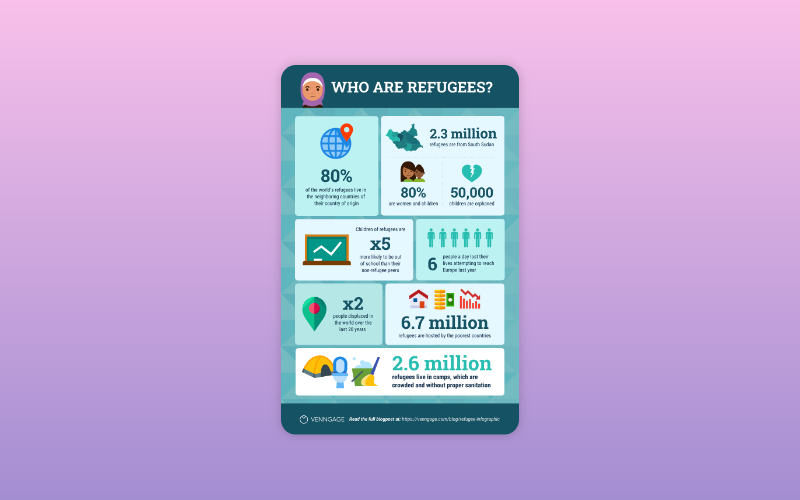
4. Ebooks and Whitepapers:
Ebooks are useful to dive deeper into the complexities of a topic. They are also perfect for targeting your customer’s pain points.
Whitepapers like Ebooks, are good for diving into the in-depth analysis of a topic. They are informative and downloadable documents issued by a company to highlight solutions.
Example: Ebooks offered by Search Engine Journal after subscribing to their newsletter.
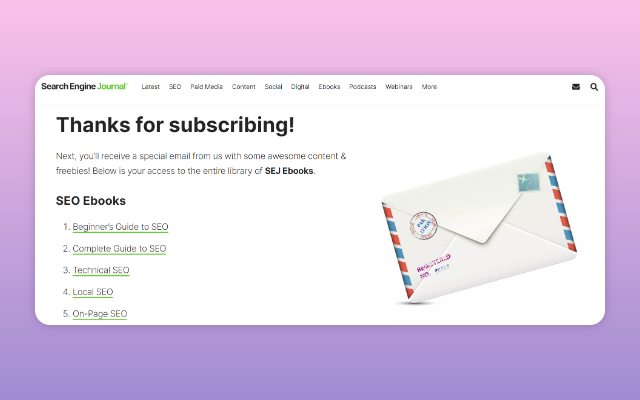
5. How-To Videos:
Creating informational videos with a “How-To” in their title is one of the best and most popular ways to educate potential buyers. To make the video creation process even more accessible, you can use a free online video editor tool to edit your videos. This way, you can enhance your content, add special effects, and fine-tune your message without expensive software or professional editing skills.
Example: A “How-To” video on YouTube teaching How to Tie a Tie.
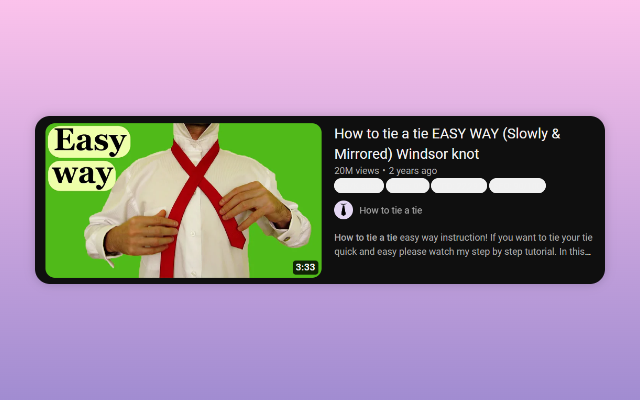
6. Podcasts:
Podcasts are audio formats of content creation that have become extremely popular today. Podcasts are usually released in installments which makes it easier for your company to gain subscribers for exclusive content.
7. Quizzes:
The best way to engage your audience with your website is to make fun and interactive quizzes. The key to making exceptional quiz content is releasing them regularly and making them catchy enough for potential buyers to keep returning to your website to play more.
Example: A Buzzfeed quiz titled “Which Dessert Perfectly Matches Your Personality?”.
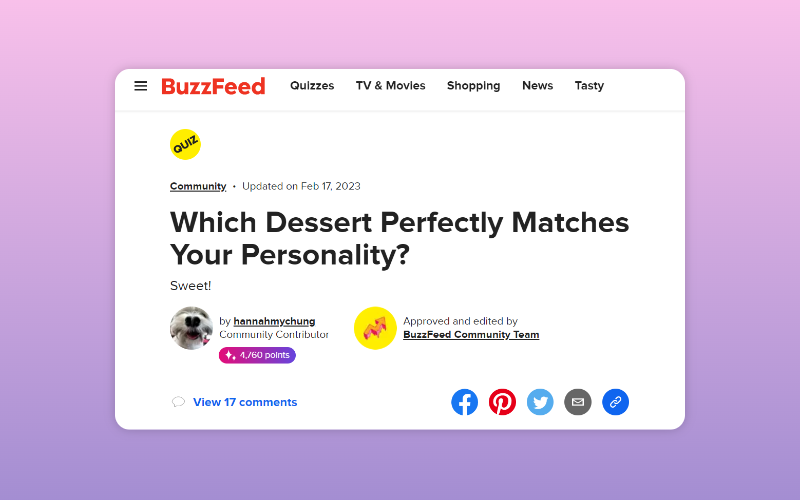
8. Comprehensive Guides:
A comprehensive guide is a content format that includes the A-Z of a topic. The title usually starts with “A Guide To _____” and it’s a very common method of content creation for the Top of the Funnel. Guides are great for addressing the pain points of your target audience.
9. Tools and Kits:
Using tools and kits like templates and calculation tools provides the user with quick help and also accommodates a hassle-free experience. Adding tools and kits to your website adds a personalized touch, which is impressive and attractive for the potential buyer.
Example: A keyword research tool called “Ubersuggest” on Neil Patel’s website.
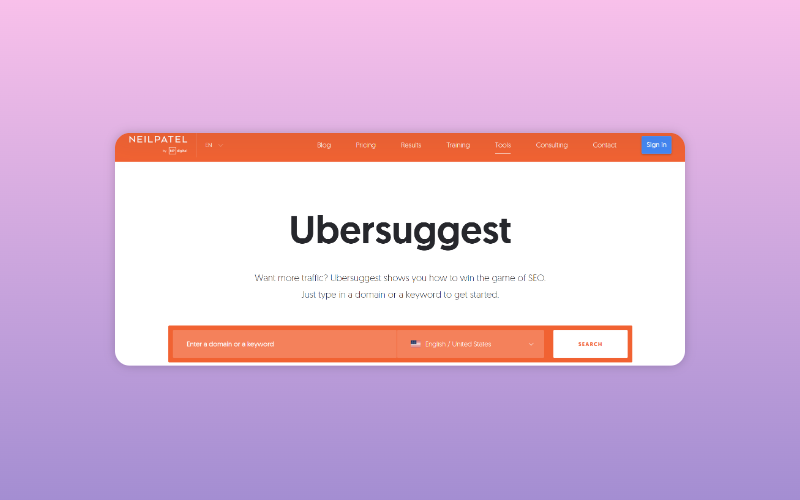
In the Consideration Stage:
The content released in the consideration stage should focus on building a relationship with future customers and gaining their trust towards the brand. If people have traveled down to the middle of the funnel, it means that on some level, they are already impressed with your brand and product. The buyer’s journey will now focus on performing research to negotiate whether they should give your product a chance or not.
Help in nudging your future customers to the bottom of the funnel by creating the following types of content:
1. How-To Guides:
“How-To” guides gain immense popularity because of their informational content and simple-to-read structure. They’re widely used by every content marketer to create attractive articles and drive traffic.
Example: A guide titled “How to Write an Essay“.
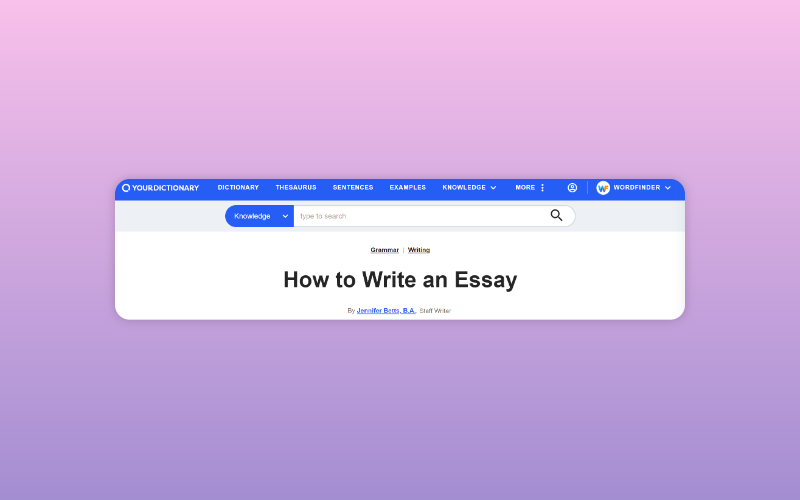
2. Product Overviews:
If the potential buyers have reached the Middle of the Funnel, chances are that they are impressed by your brand. Make sure to provide a clear, concise, and useful description of your product. Avoid making it over the top while highlighting the key features and benefits in a gentle way. Product overviews can be used for both MOFU and BOFU content.
3. Case Studies:
A case study works great in educating future customers about how your product has worked for existing customers in wonderful ways. They also convey “real-world examples” that exceedingly help in adding a “relatable” value to your content. Case studies help in building brand confidence and can be used for both MOFU and BOFU stages.
Example: A case study by GatherContent titled “How the University of Edinburgh uses GatherContent to maintain content in their degree finder”.
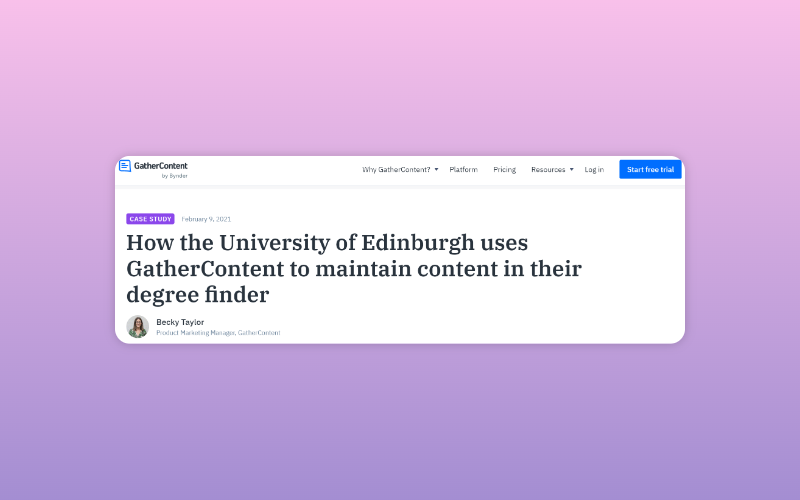
4. Landing Pages:
A landing page is a standalone web page of a website where a user “lands” after clicking on a link that showcases your website. Landing pages are usually designed with a single goal in mind and are a “Call to Action” for a company’s marketing campaign. Creating one will be helpful for your company to get people from the top or middle of the funnel to the bottom fairly quickly.
5. Webinars:
Attending webinars held by companies provide users with all the information on how to solve an issue. Hosting webinars also creates space for an on-the-spot FAQ round to clear any doubts users may have regarding the discussion topic. Webinars are a great and cost-effective video marketing tool.
6. Comparison Guides:
Drafting comparison guides between your product and your competitor’s product will make research for the user easier and also instill a feeling of confidence and trust regarding your brand and product. Comparison guides are a valid content type for both the MOFU and BOFU stages of the funnel.
7. Email Marketing:
Email Marketing in the form of newsletters is another great way to create Middle of the Funnel content. A newsletter will periodically remind potential customers about the existence and goodness of your product, and keep compelling them to make a purchase. You can get them to sign up for newsletters by creating landing pages.

In the Conversion Stage:
If you’ve managed to make a potential buyer travel down to the Bottom of the Funnel, BRAVO! You’re doing very well. All you have to do now is give the last push to turn them into a customer. The buyer’s journey is now nearing the end, so work on giving them definite reasons that your product is good enough for their needs.
Drive the users to say ‘yes’ to your product by creating the following Bottom of the Funnel content:
1. Customer Reviews:
One thing we all do before making a purchase online is read the reviews. 92% of B2B buyers are more inclined towards making a purchase after reading a positive customer review. It is important to highlight the 5-star reviews. If you’ve gotten any negative reviews, highlight how you worked towards making the user experience better.
2. Success Stories:
9 out of 10 people say that they’ll buy a product only after reading through customer stories. That’s quite a high number, and hence it’s important to give users access to hundreds of customer success stories in order to influence their decision-making.
Example: A web page dedicated to customer stories by Microsoft.
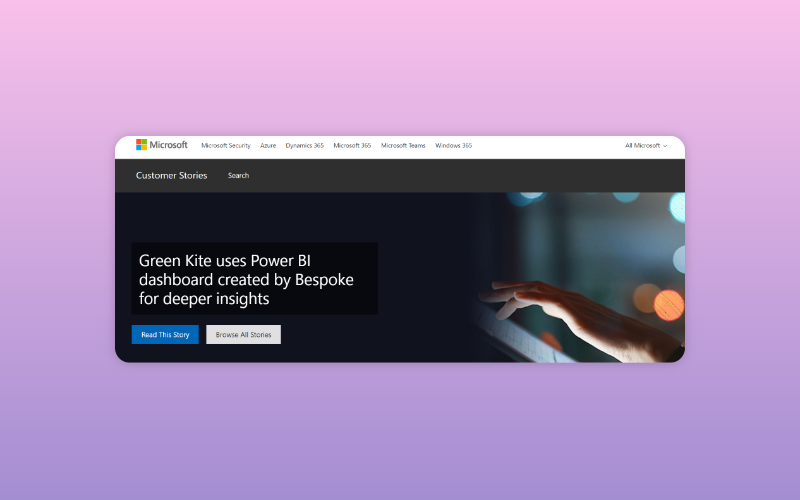
3. Freemium:
Having to sit through ads on music streaming platforms after you’ve had a taste of that sweet-sweet ad-free premium is something none of us can go back to. Offering a free trial of your premium product to users gives them a better experience and also a good reason to stay.
Example: Spotify offers a free Premium for 1 month before charging $9.99/month.
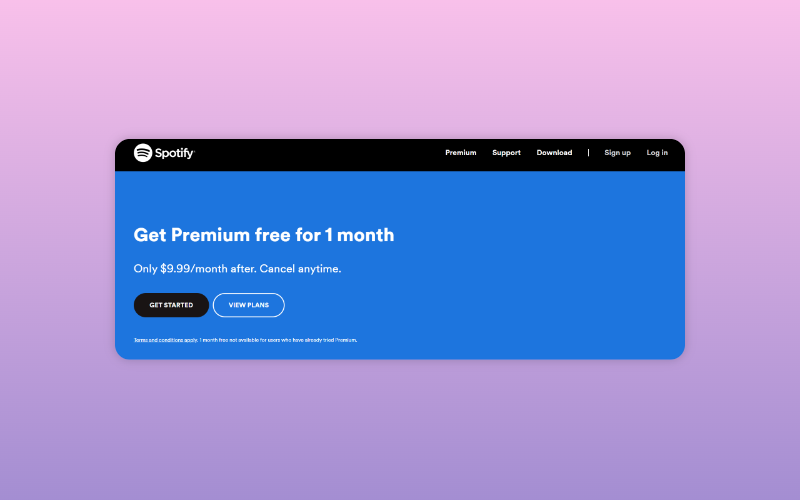
4. Live Demos:
Live Demos of the working of your product give the potential buyers a clear idea of the uses and benefits of your product, while also eliminating any doubts they might have about it. Live Demos are also cost-effective for your company, making them a great choice to interact with the audience.
Example: Zendesk offers a Live Demo for their platform Zendesk Sunshine on YouTube.
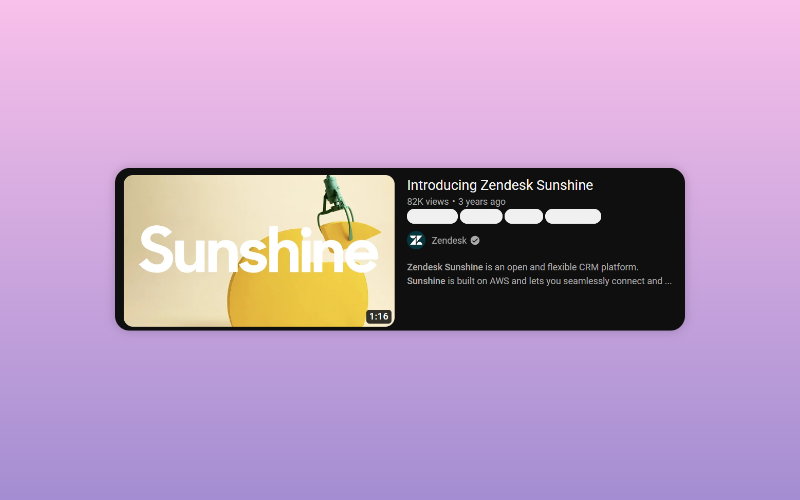
5. Events:
Organizing or participating in events gives your company a chance to directly interact with customers and have a live to-and-fro about the benefits of your product. Getting a stall in a big event (like Flea Markets or TechCrunch) gives you easy access to a large interested customer base.
6. Pricing Pages:
Don’t shy away from openly communicating your pricing or ask people to contact you if they want to know the price of your product. Pricing pages help the user make a quick decision about whether your product is within their budget.
7. Consultation Offers:
Offering a quick consultation provides a significant push for a lower cost. Make the consultation experience of the future buyer one to remember. Focus on highlighting the goodness of your brand and product, while also helping them with the minor doubts they have.
Example: Unbounce offers a free consultation with a specialist to educate users about their services.
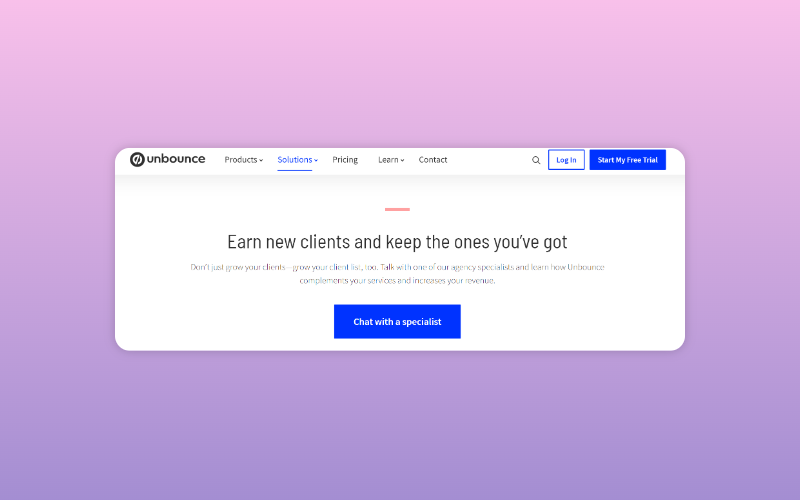
8. Coupons:
I personally get a dopamine surge whenever I hear the word “coupons”. Coupons attract customers with the idea of saving money by making a purchase. Offering coupons like “Get 10% off on your first purchase!” or “Get 15% off by referring our brand to your friend!” are appealing to act on, and have a high distributable value.
Before you leave, the Key to Success is → Tracking Your Progress
The strategy for using a content marketing funnel is pretty simple- bring the leads from the Top of the Funnel to the Bottom of the Funnel. Here’s how you can track your progress as a marketer:
1. Try Different Formats:
If you’re confused about what kind of content you need to create at a specific stage in your business, try creating the same content in different formats.
Choose a topic → Create a blog, host a webinar, and hold a live demo on it → Analyze your results → Form a respective strategy.
2. Work On Retaining Your Customers:
Retaining customers is just as important as bagging them. Make sure that the experience you provide is good enough for them to not look for other options. Email marketing is a good way to go to for communicating with existing customers about any new product updates or company announcements.
3. Understand Your Audience:
Put yourself in your customers’ shoes. In order to create relatable content for your audience, you need to understand them first. Analyze your buyer persona and create content that targets their pain points. Compare the before and after of your sales after applying this strategy.
4. Keep Refreshing Your Content:
Keep a close check on your existing content and its performance, while also looking for ways to refresh and improve your old content. In this fast growing time of content marketing and SEO, staying ahead of the curve is important.
5. Constant Communication:
Having conversations consistently with your existing customers is the key to figuring out what’s working about your product and what’s not. Ask for reviews and suggestions to improve the quality of your product. Also, talk to your sales and marketing teams to gain knowledge about the issues they’re facing and to find out more about the pain points of your customer base.
Final Thoughts
Using the content marketing funnel for content creation would be a great way for you to track your content’s performance. Once again, the main strategy to follow is: bring the leads from the Top of the Funnel to the Bottom of the Funnel. Once you’ve got the users at the top, charm them with the variety of content you’re providing and try to bring them to the bottom to make them a customer.
If you’re struggling with any form of content creation, try working with companies like Wittypen that offer content writing services for good prices, and make sure to provide every customer with a good experience.

FAQs
1. What is a Content Marketing Funnel?
The Content Marketing Funnel is a model that helps marketers visualize how content creation influences the path a potential customer might take from the moment they find out about your brand, till the moment they decide to purchase your product.
2. What are the stages of a Content Marketing Funnel?
A Content Marketing Funnel typically has three stages. They are:
- The Top of the Funnel (TOFU), also known as the awareness stage.
- The Middle of the Funnel (MOFU), also known as the consideration stage.
- The Bottom of the Funnel (BOFU), also known as the decision stage.
3. What are the Content Types in Each Stage of the Marketing Funnel?
The content type in each stage of the content marketing funnel varies according to the strategy needed to attract buyers at that particular stage. Some examples of content types during each stage of the marketing funnel are
- Top of the Funnel stage (TOFU):
- Blog and Social Media posts
- Infographics and Checklists
- Ebooks and Whitepapers
- Podcasts
- Middle of the Funnel stage (MOFU):
- How-To guides
- Case studies
- Product overviews
- Email marketing
- Bottom of the Funnel Stage (BOFU):
- Customer reviews
- Free trials
- Pricing pages
- Consultation offers
4. What is the relationship between content creation and the marketing funnel?
The relationship between content creation and marketing funnel is based on the idea that different forms of content attract audiences towards your brand in different ways. For example, a blog post addressing a pain point might help the user’s problem but not really compel them to buy from you. On the other hand, providing a free trial might convince a user to buy your product.
5. How can market research experts effectively use content to drive customer acquisition and retention?
Market research experts can use content creation in the form of informational blogs, webinars, and consultation offers to attract users to their products and brand value. When marketers have bagged new customers, they can retain them by offering exclusive content, giving an in-depth analysis for every query, and insider content.
6. What is the key element of a successful content marketing strategy for the marketing funnel?
The key element of a successful content marketing strategy for creating content according to the marketing funnel is looking for ways to bring the leads at the top of the funnel to the bottom of the funnel. Some ways to do that are:
- Creating awareness-based content for the Top of the Funnel stage.
- Content creation that makes people consider your product in the middle of the funnel stage.
- Making product-based content at the bottom of the funnel stage.
- Email marketing for retaining existing customers.
7. How can market research experts stay ahead of the curve in terms of content creation & marketing funnel trends?
Market research experts can stay ahead of the curve by creating a marketing strategy using the content marketing funnel. Tracking the content marketing funnel will help experts with targeting specific customers on their website, turning them from researchers to loyal customers of their product, and seeing remarkable sales.



